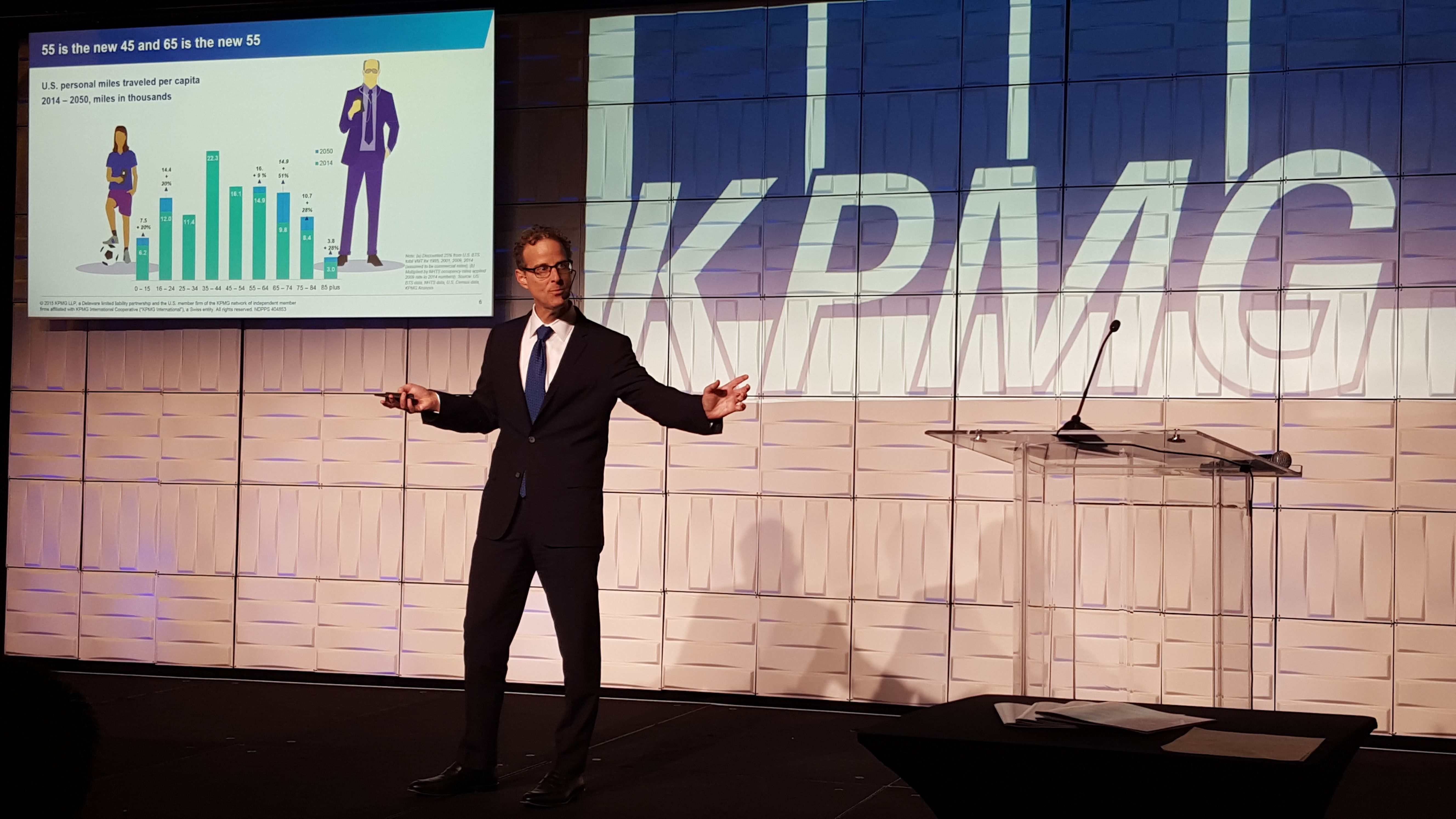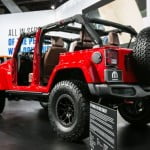Some forecasters have predicted that vehicles sales will fall in the future because urban-living millennials—and more importantly, the generation that follows them—don’t value car ownership. Instead, they younger generation will increasingly use alternatives like Uber, Lyft, and Daimler’s car-sharing service Car2go.
 The advisory arm of KPMG says this shift will cause an interesting side effect—and not the death of automakers as some predict. While car ownership—and in turn, sales may decline—the number of total annual vehicle miles driven will soar.
The advisory arm of KPMG says this shift will cause an interesting side effect—and not the death of automakers as some predict. While car ownership—and in turn, sales may decline—the number of total annual vehicle miles driven will soar.
U.S. cars will travel one trillion additional miles annually by 2050, or 35% more than the roughly 2 trillion miles traveled in 2015, according to KPMG. The company’s research, which consisted of consumer focus groups in Atlanta, Chicago and Denver, found that millennials and “baby boomers plus,” who range in age from 45 to 75, will be largely responsible for the increased driving.
“I’m not sure people understand the enormity of the change, nor are we ready for it,” says Gary Silberg, national automotive leader for KPMG. In KPMG’s view, this is a huge opportunity for the automotive industry. It will also require a business model that generates profits through tailored premium experiences inside a vehicle. Each age demographic will have their own view of what premium experiences mean. For instance, millennials might pay for a rolling office or a moving entertainment center, the report suggests.
What’s striking about KPMG’s projections is that they’re based on increased driving by the two ends of the consumer age spectrum: the very young and old. The folks in the middle, people who represent the bulk of drivers, weren’t included in the study, Silberg told a crowd at the Los Angeles Auto Show’s Connected Car Expo.
For instance, more kids between the ages of 10 and 15 will use ride services like HopSkipDrive to get where they need to be. On the flip side, seniors will increasingly tap into on-demand ride-hailing services such as Uber and Lyft.
If self-driving cars take off— and KPMG expects that to occur over the next two decades—we could see twice as much demand, the company says.
Silberg contends that kids shuttling around in self-driving cars or car-riding services isn’t as far-fetched as we might think.
“Think of it this way: 10 years ago, how many of us would have predicted that most 10-year-olds would be walking around with smartphones?” asked Silberg. “We grossly underestimated that trend. The automotive landscape will significantly change as a result of autonomous vehicles, and consumer behavior will dictate the rate of adoption. Like the smartphone, let’s not underestimate the power of these changes and the vast potential for new business models to satisfy them.”
The upshot? This shift could have a profound impact on vehicle sales, car ownership models, energy demand, and infrastructure. Automakers are also under pressure to act more like technology, software and consumer electronics companies with more highly customized products, and a quicker introduction of new, “sexy” models, the study says. As a result of this changing competitive landscape, KPMG believes that in 10 years, many of the major automakers will no longer be around, at least not as independent companies.
[“source-fortune”]





